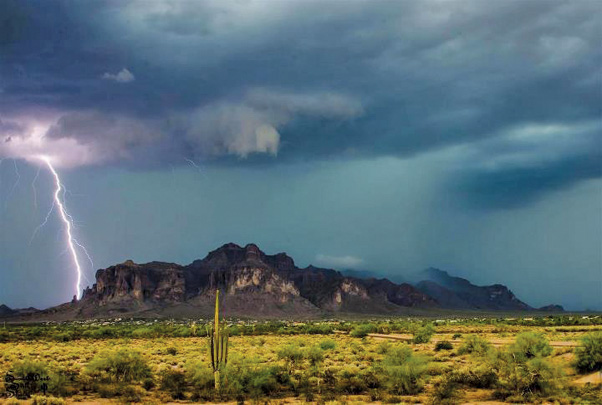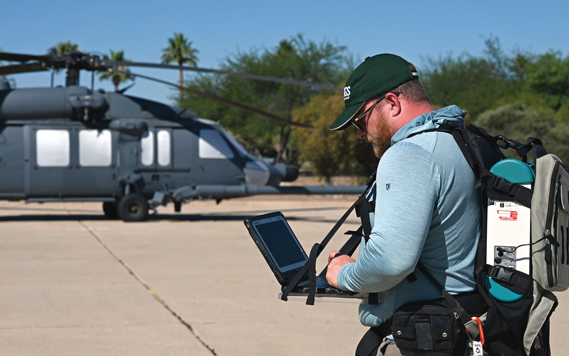LUKE AIR FORCE BASE, ARIZONA — Arizona is known for being sunny with clear skies for the majority of the year, but every year “it” happens. As the clouds roll in, the sky darkens with thunderbolts streaming overhead, and the first drops of rain hit the desert ground. Monsoon season is here.
“During monsoon season, you’ll have strong thunderstorms coming through the area, heavy downpours of rain, and at times, heavy gusts of wind,” said Airman 1st Class Kendall Griffin, 56th Operations Support Squadron Weather Flight apprentice. “Mainly what we look for are air mass thunderstorms. This is essentially when a swath of moisture comes over the area and kind of popcorns out some thunderstorms. When they fall and create two or more outflows running into each other, we’ll get more thunderstorms.”
Monsoon season begins June 15 and ends Sept. 30, but the storms peak between July 15 and Aug. 15, said Staff Sgt. Adam Duncan, 56th OSS weather technician.
While monsoon season benefits Arizona’s populace and nature, it can be hazardous.
“Make sure you watch the news for the weather broadcast, which will broadcast warnings for flash floods, high winds and more,” said Ben Bruce, 56th Fighter Wing ground safety manager. “Being aware of upcoming weather conditions will help you stay safe and be prepared for what’s to come.”
“Monsoon season does provide a lot of the refreshing water we need to fill the reservoirs and streams,” Bruce said. “But it also happens rapidly, and so I say, ‘Keep your head about you and keep your wits about you,’ meaning be cognizant of your own safety and what’s going on around you.”
Tips to stay safe during the monsoon season:
If a dust storm hits while driving, reduce speed, move off the side of the road onto the shoulder of the road, stop, turn off the lights and wait for the dust storm to pass.
· Secure any objects outside the home such as garbage cans, garden hoses and deck chairs, or store them inside if possible.
· Read and obey warnings, such as a sign that reads, “Danger do not enter” or “Avoid this roadway.”
· Stay indoors or in a vehicle when there is a thunderstorm. If at home or in a building, stay away from windows and avoid cellphone usage.
· Be cognizant of the surroundings especially when outdoors and watch for changes in weather. Some early warning signs of weather changes are increase in wind, drop in temperature and cloud cover.
· Pay attention to cellphone weather warning alerts.












